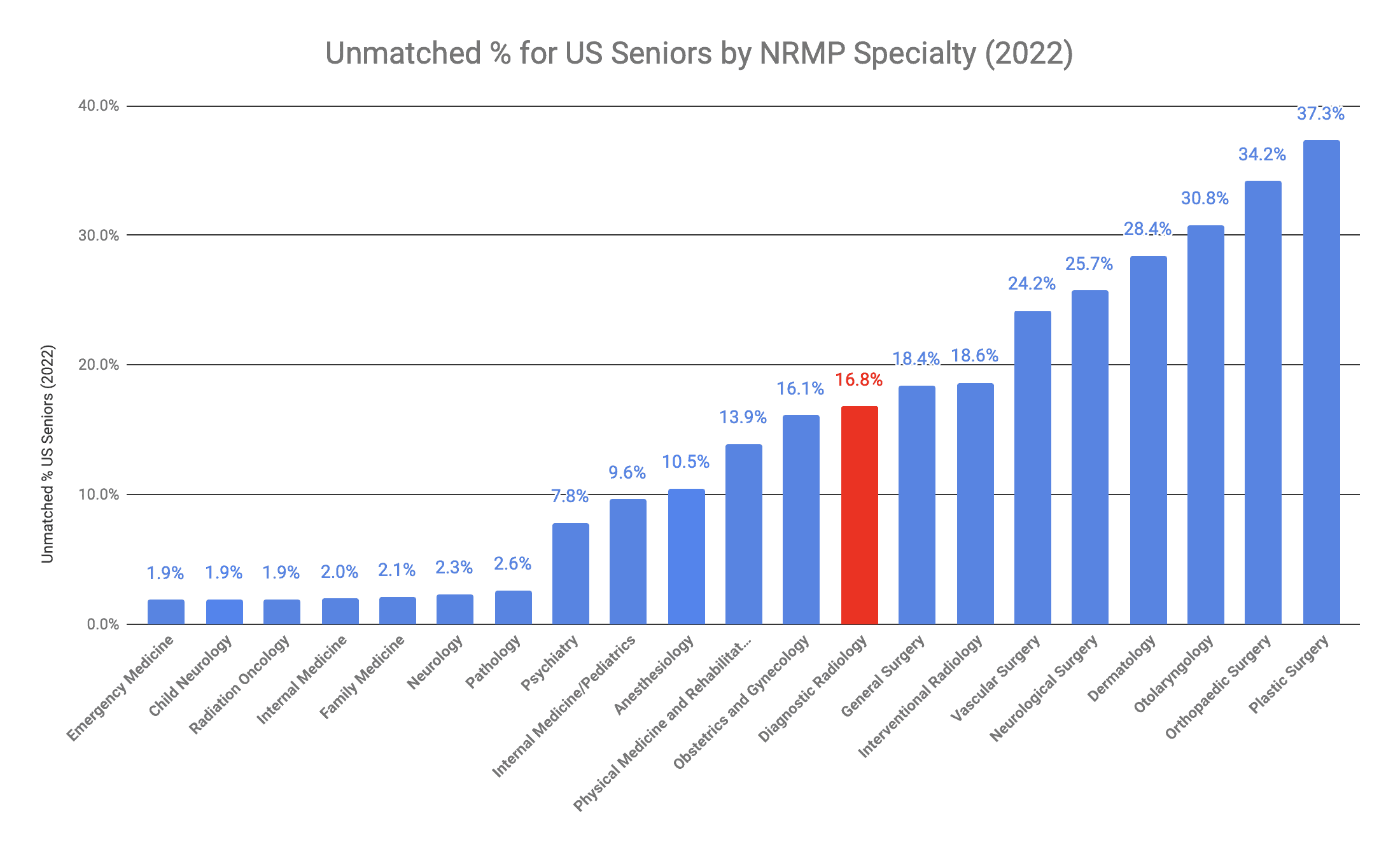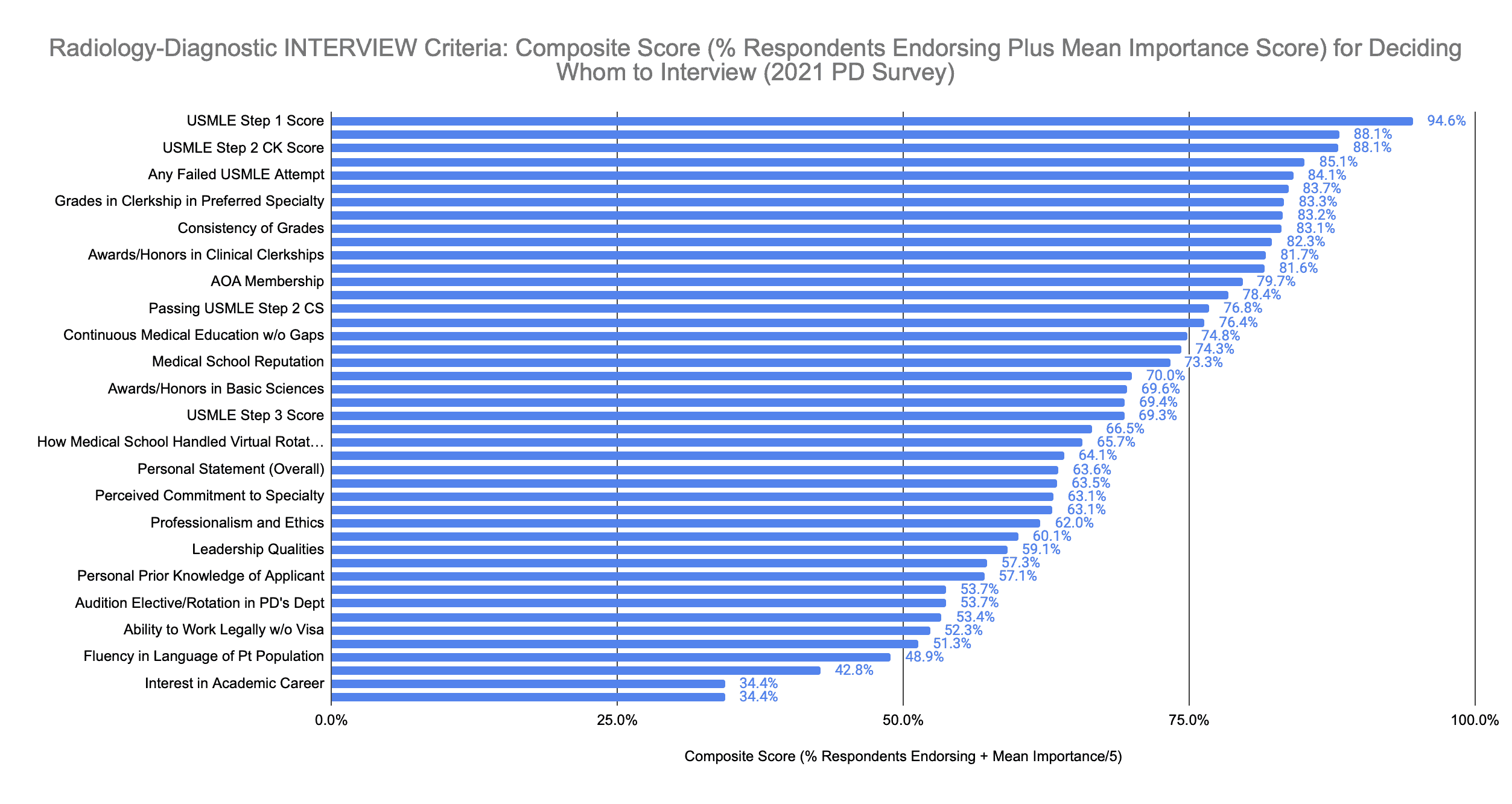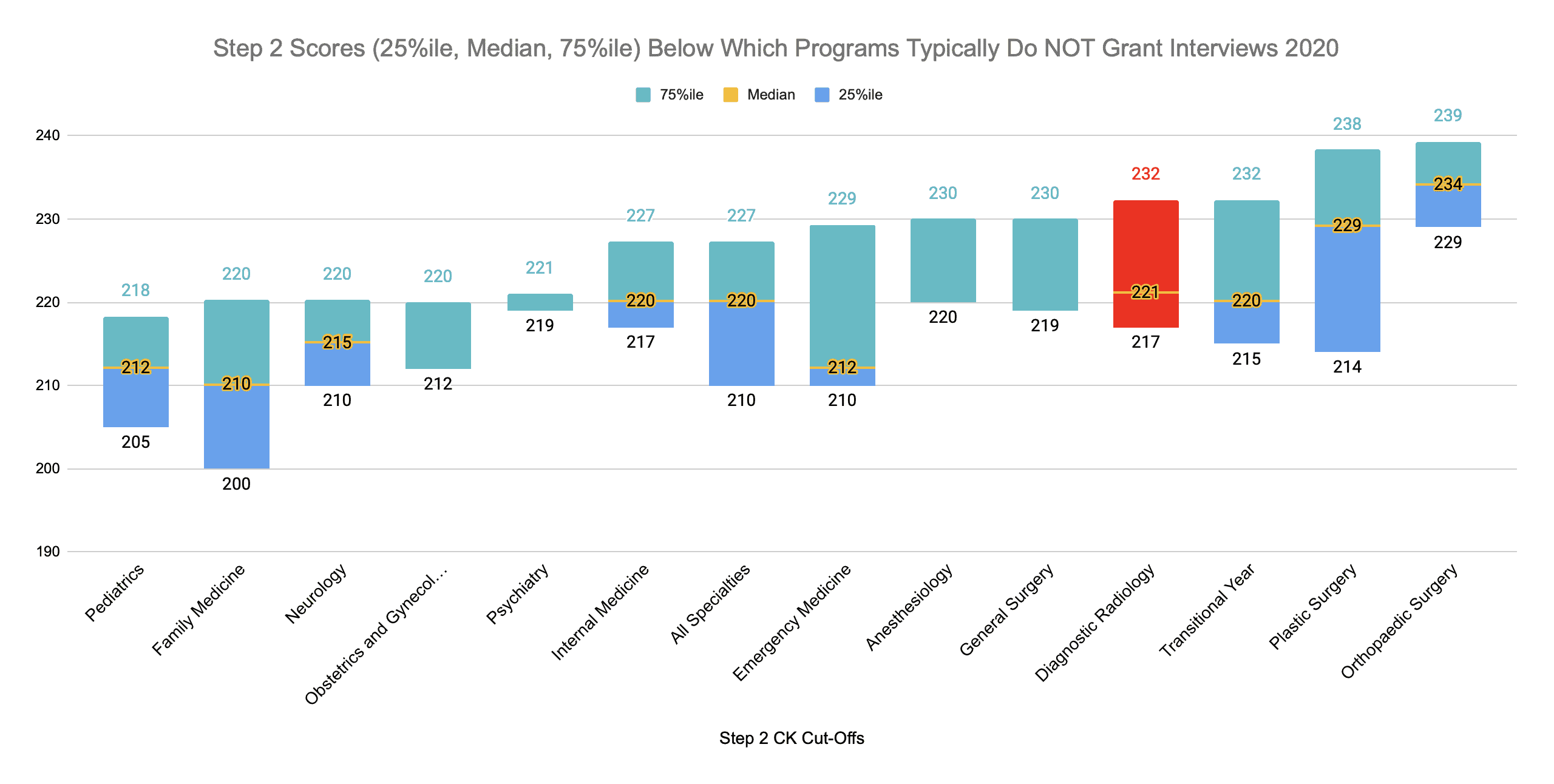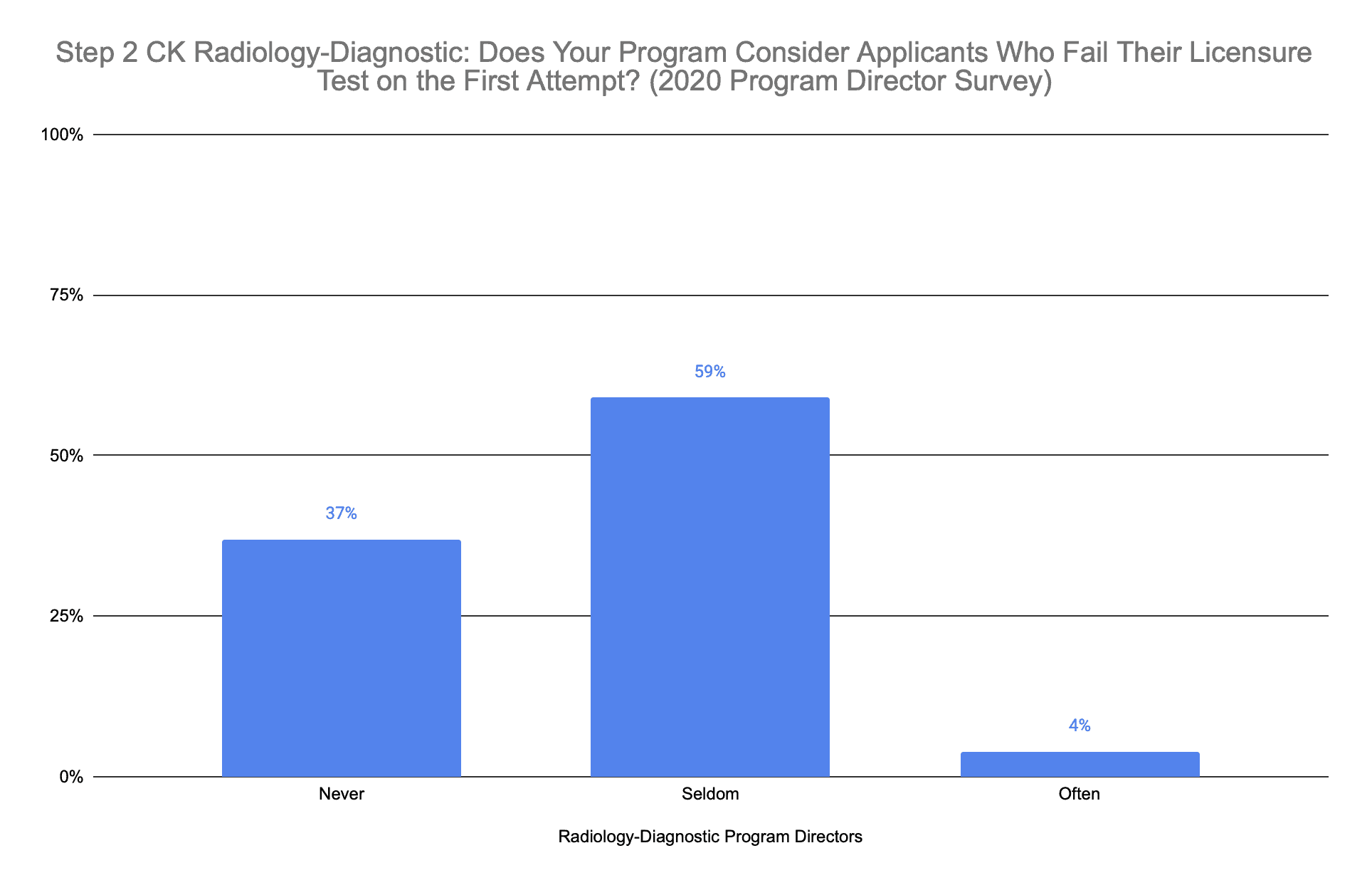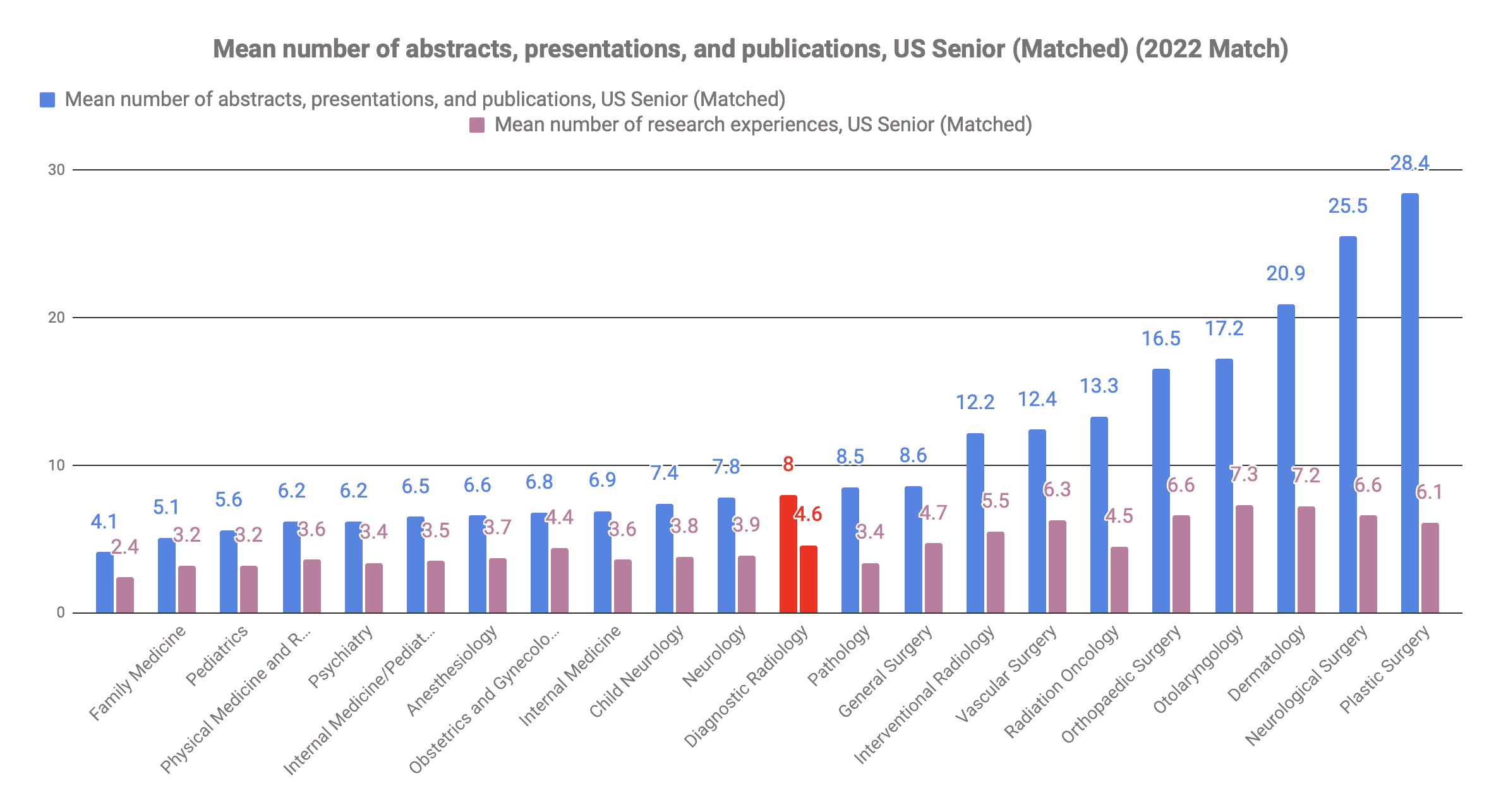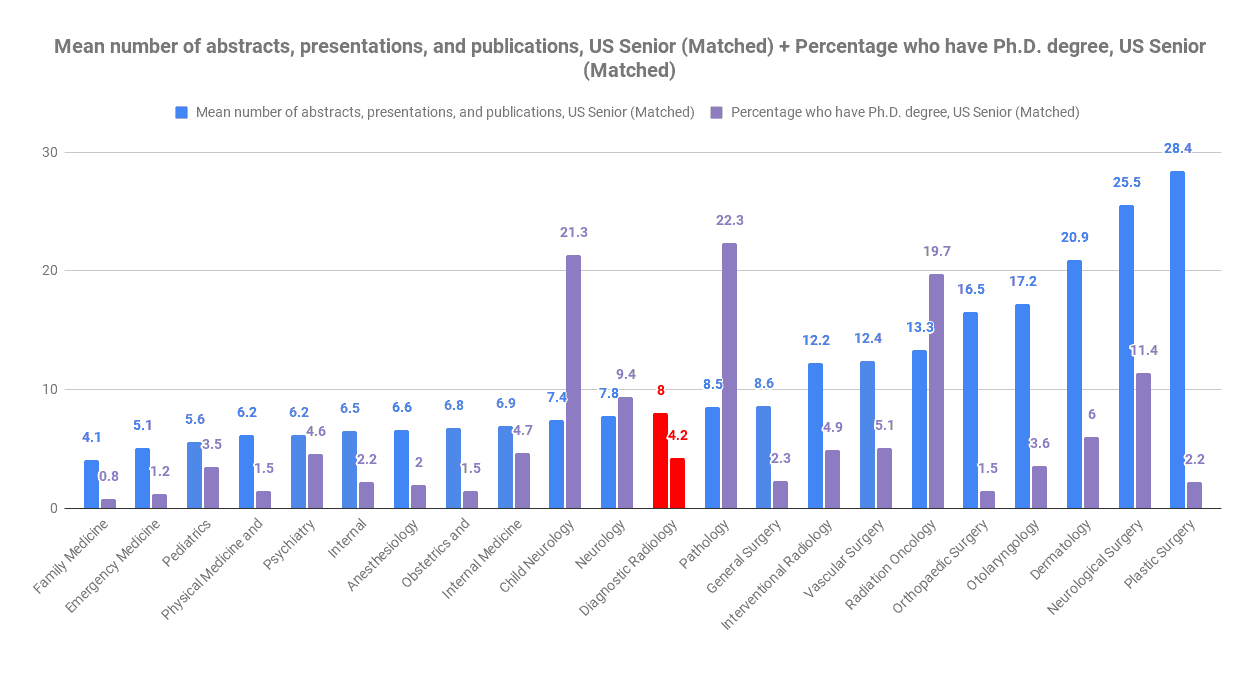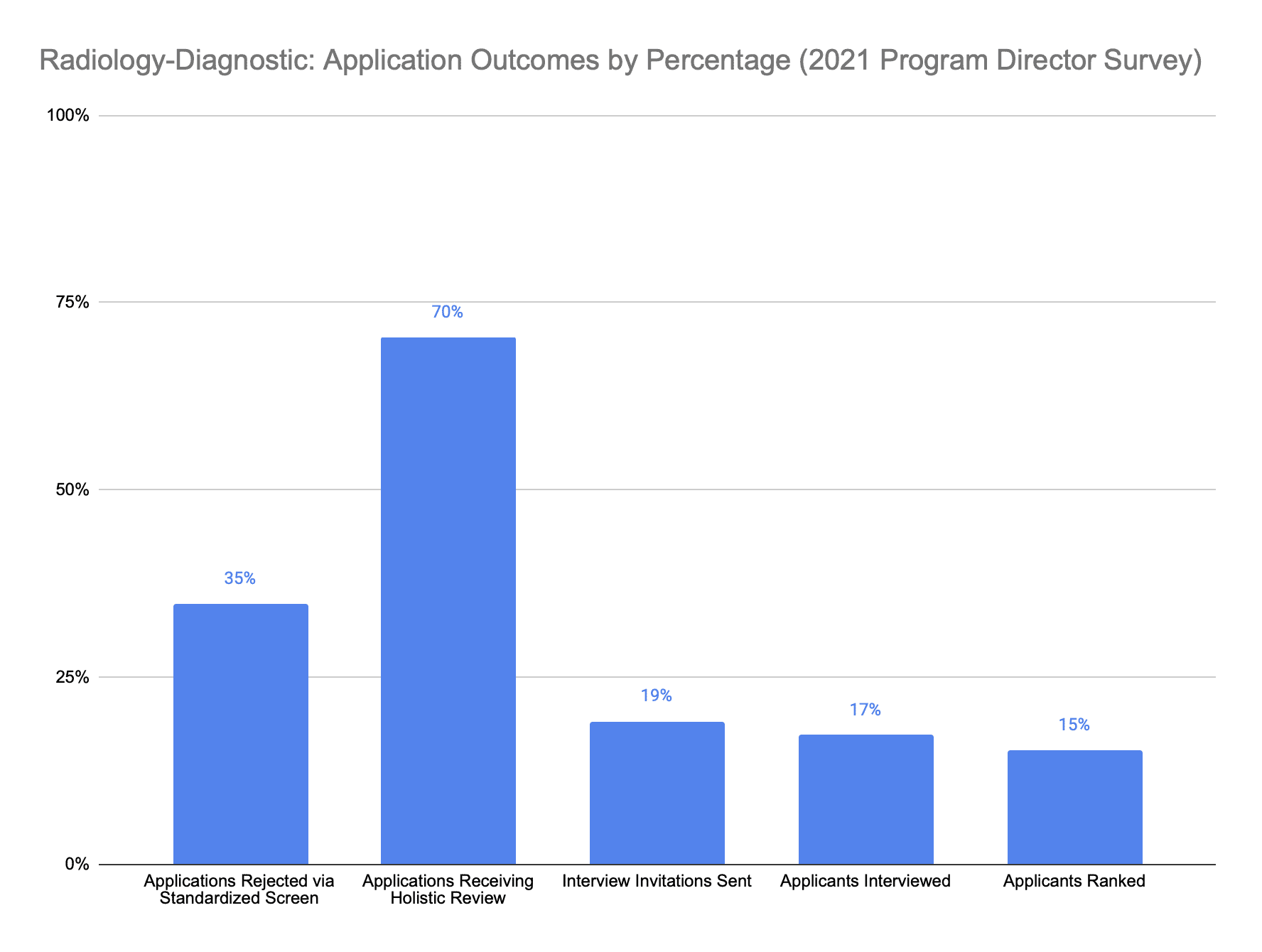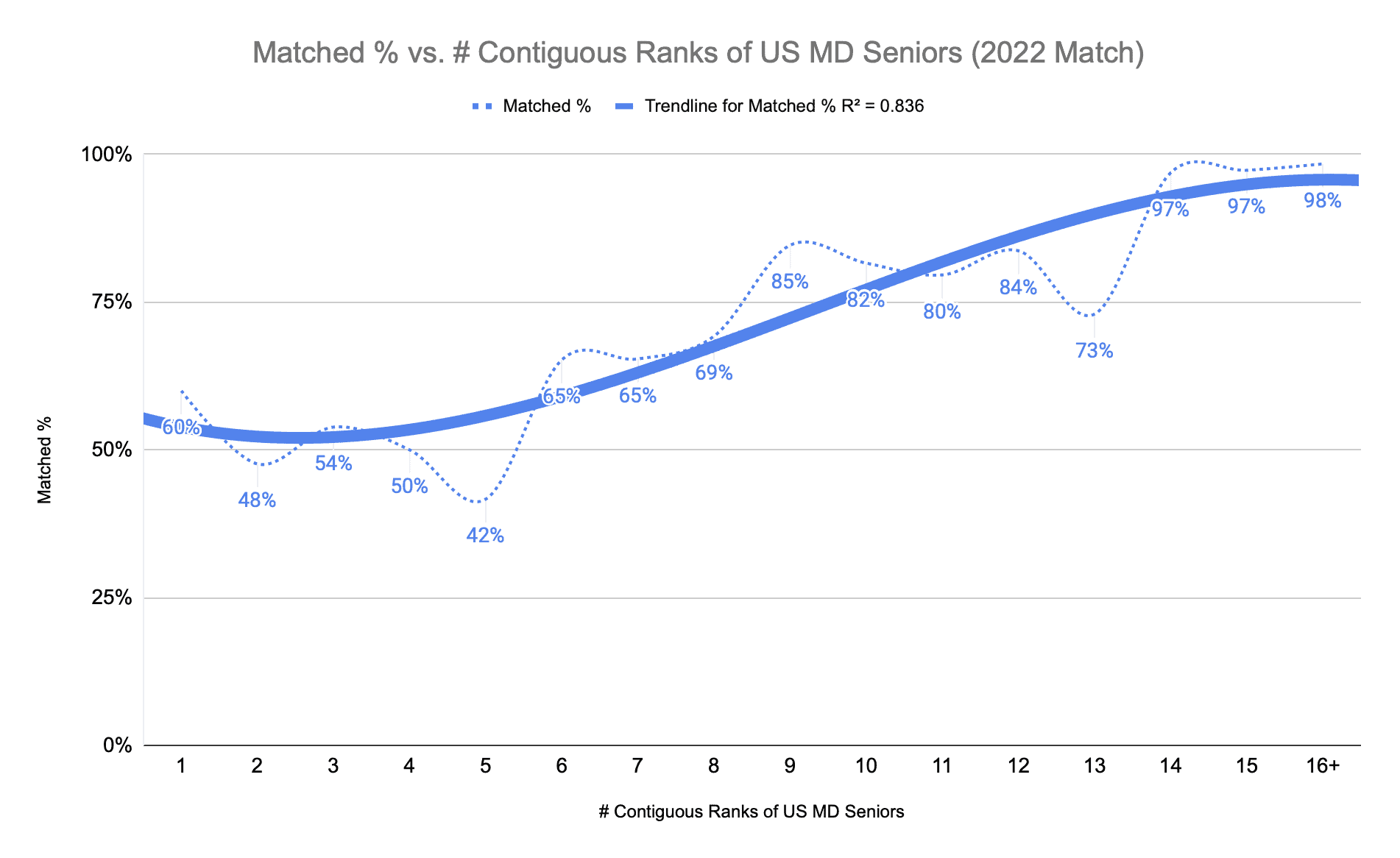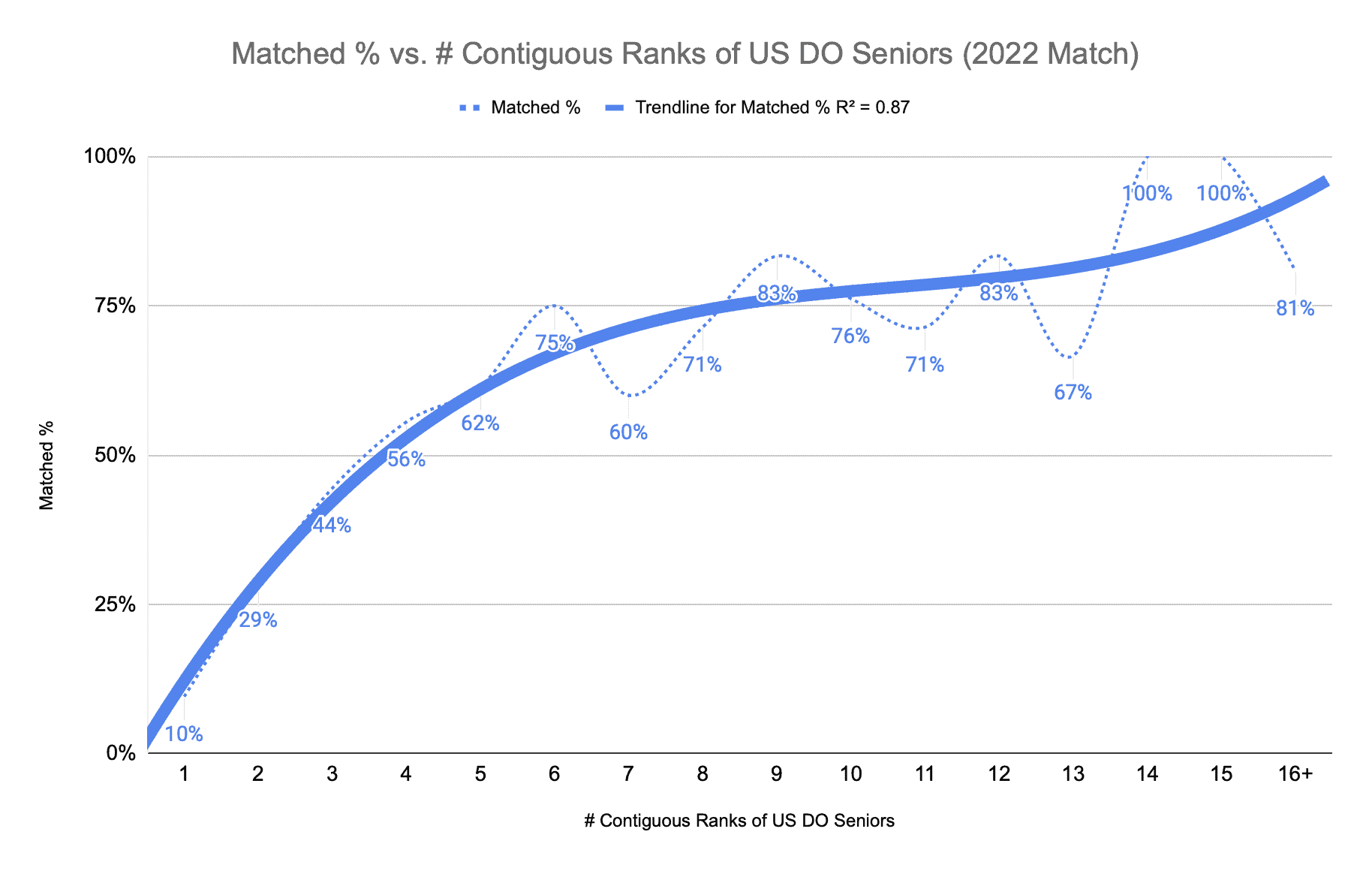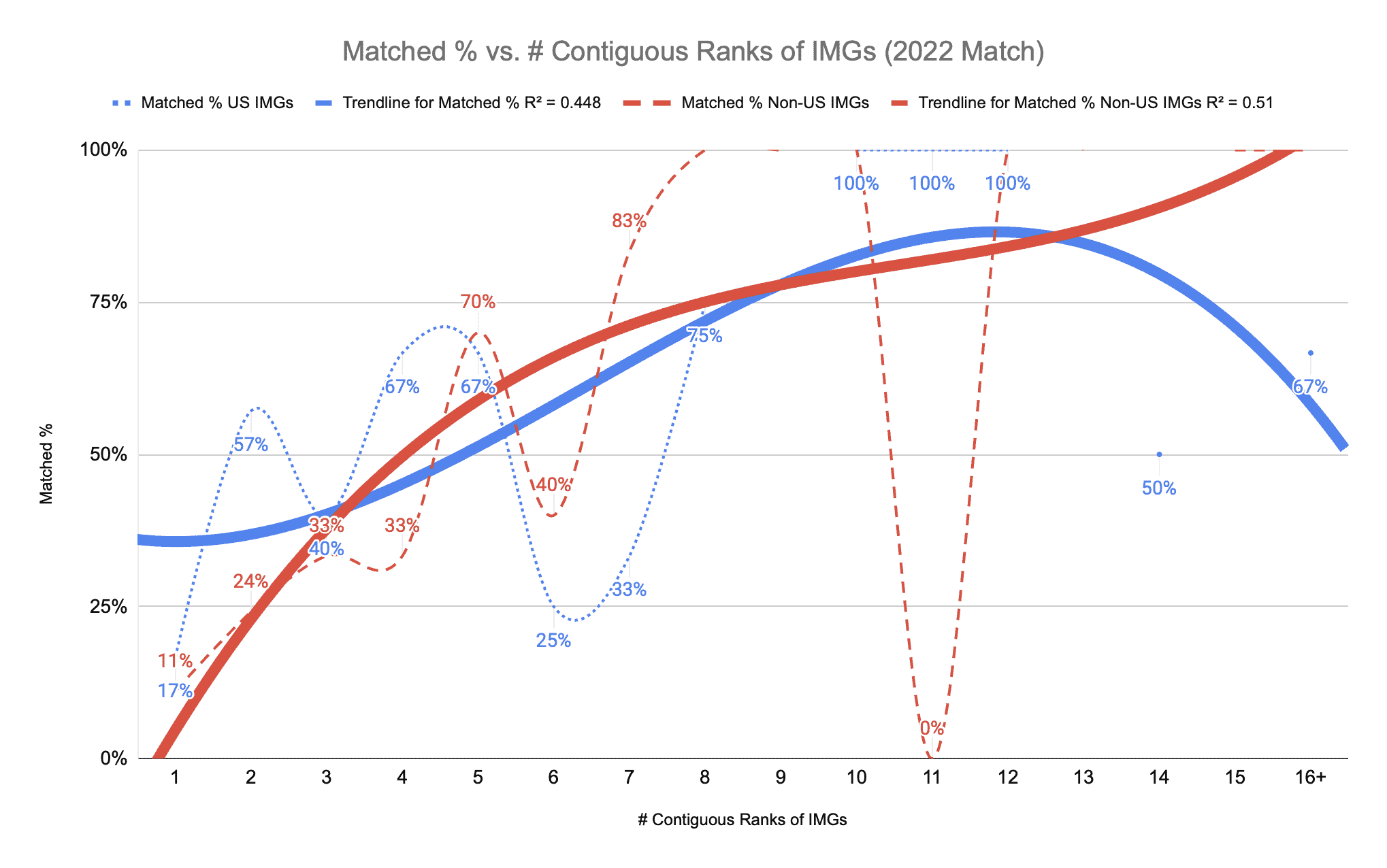
Are you wondering how to match into diagnostic radiology? Or how many diagnostic radiology residency programs are there? Do you want to know everything there is about diagnostic radiology residency interviews? Need to know how many interviews to match in diagnostic radiology?
In this article, you’ll learn everything you need to match into diagnostic radiology.
Summary:
- Diagnostic radiology is moderately competitive, in part due to having so many programs and positions available
- In part due to the volume of applications, diagnostic radiology residency programs use standardized screens to “weed out” applicants
- The most successful applicants will have good USMLE scores, a stellar MSPE, and show a lot of interest and commitment to the specialty.
- Historically, most diagnostic radiology interview invites occur before October 31, and the vast majority before November 31
Table of Contents
How Competitive is it to Match into Diagnostic Radiology?
How competitive is it to match into diagnostic radiology in the US? Here we have the unmatched % of US seniors by specialty. The “Unmatched %” means the % of US seniors who applied to diagnostic radiology who did not match during the given year.
This is one measure of specialty competitiveness – perhaps the most relevant if you want to match into diagnostic radiology.
For more on the competitiveness of diagnostic radiology relative to other medical specialties, see this article.
How Many Diagnostic Radiology Residency Programs Are There?
Before we discuss how many diagnostic radiology residency programs there are in the US, let’s review some terminology. For many specialized residency programs (e.g., anesthesiology, dermatology, radiology, radiation oncology, etc.), the specialty training begins during the second year of residency. This second year is also known as the PGY-2 (post-graduate year 2, for the second year after graduating from medical school).
Categorical vs. Advanced vs. Physician Diagnostic Radiology Programs
Diagnostic radiology has three different residency programs applicants can potentially enter: categorical, advanced, and physician (R).
Categorical refers to programs that include all years of residency training. Diagnostic radiology residency lasts four years. The first year of training, however, is a “preliminary” year that can be either internal medicine, surgery, or transitional (a sort of grab-bag that will depend on the hospital). Some programs include the PGY-1 “intern” year – these programs are known as “categorical” programs.
Others, however, require applicants to match separately into an intern year. These programs, which begin in the PGY-2 years, are referred to as “advanced” positions.
Finally, others who have already completed at least a year of residency training may be eligible for a “physician” diagnostic radiology position. These positions allow applicants to move directly into the PGY-2 specialty training and skip the PGY-1 year. This arrangement may be ideal for those who want to complete residency sooner and not have to repeat their intern year.
How Many Diagnostic Radiology Residency Programs and Positions Are There?
In the 2022 NRMP Match, there were:
- 34 Diagnostic Radiology programs offering 132 PGY-1 (categorical) positions,
- 172 Diagnostic Radiology programs offering 997 PGY-2 (advanced) positions, and
- 19 Diagnostic Radiology programs offering 26 Physician (R) positions
Thus, the total number of Diagnostic Radiology residency positions in 2022 was 132 + 997 + 26 = 1,155. There were at least 34 Diagnostic Radiology programs in 2022. However, it is unclear how many more than that there were since many of the residency programs that offer advanced and/or physician positions also offer categorical ones.
See the 2022 Main Residency Match Results and Data for more information on diagnostic radiology match statistics.
How to Match into Diagnostic Radiology: Impressing Program Directors
To match into diagnostic radiology, you must first be invited to an interview. According to the most recent program director (PD) survey from 2021, PDs shared what they look for in candidates they hope to interview.
For diagnostic radiology, the top five most important characteristics for receiving an interview, according to program directors, were:
- USMLE Step 1 score
- MSPE
- Perceived interest in the program
- Perceived commitment to specialty
- Having overcome significant obstacles
The same data are presented more fully in a table. Here you will see the % of program director respondents who cited a factor as important for granting an interview, as well as the mean importance score (out of 5).
To balance the breadth of program directors citing each factor with the importance given to each factor, a “composite score” was created. This composite score takes the average of the % respondents citing a factor with the importance score scaled to 100%. For example, if 80% of PDs cited a given factor, with a mean importance score of 5.0 (out of 5), the composite score would be 90%. (The average of 80% of PDs citing with 5/5 – or 100% – for the mean importance, for a composite score of 90%).
| Radiation-Diagnostic: Characteristics Considered in Deciding Whom to INTERVIEW (% of Respondents Endorsing) | Radiation-Diagnostic: Characteristics Considered in Deciding Whom to INTERVIEW (Mean Importance / 5) | Radiation-Diagnostic: Characteristics Considered for Interview Composite Score (Average of % Respondents Endorsing and Mean Importance / 5) | |
|---|---|---|---|
| USMLE Step 1 Score | 97.1% | 4.6 | 94.6% |
| MSPE | 88.2% | 4.4 | 88.1% |
| Perceived Interest in Program | 94.1% | 4.1 | 88.1% |
| Perceived Commitment to Specialty | 88.2% | 4.1 | 85.1% |
| Having Overcome Significant Obstacles | 88.2% | 4 | 84.1% |
| USMLE Step 2 CK Score | 85.3% | 4.1 | 83.7% |
| Any Failed USMLE Attempt | 70.6% | 4.8 | 83.3% |
| Class Ranking/Quartile | 82.4% | 4.2 | 83.2% |
| Letters of Recommendation in Specialty | 88.2% | 3.9 | 83.1% |
| Professionalism and Ethics | 76.5% | 4.4 | 82.3% |
| Personal Prior Knowledge of Applicant | 79.4% | 4.2 | 81.7% |
| Personal Statement (Overall) | 91.2% | 3.6 | 81.6% |
| Diversity Characteristics | 85.3% | 3.7 | 79.7% |
| Any Failed COMLEX-USA Attempt | 58.8% | 4.9 | 78.4% |
| Grades in Required Clerkships | 73.5% | 4 | 76.8% |
| Consistency of Grades | 64.7% | 4.4 | 76.4% |
| Leadership Qualities | 67.6% | 4.1 | 74.8% |
| AOA Membership | 70.6% | 3.9 | 74.3% |
| Volunteer/Extracurricular Experience | 70.6% | 3.8 | 73.3% |
| COMLEX-USA Level 1 score | 50.0% | 4.5 | 70.0% |
| Medical School Accreditation Status | 47.1% | 4.6 | 69.6% |
| Other Life Experience | 64.7% | 3.7 | 69.4% |
| Awards/Honors in Clinical Clerkships | 70.6% | 3.4 | 69.3% |
| Audition Elective/Rotation in PD's Dept | 52.9% | 4 | 66.5% |
| NRMP Flag for Match Violation | 35.3% | 4.8 | 65.7% |
| Ability to Work Legally w/o Visa | 44.1% | 4.2 | 64.1% |
| Passing USMLE Step 2 CS | 47.1% | 4 | 63.6% |
| Grades in Clerkship in Preferred Specialty | 52.9% | 3.7 | 63.5% |
| COMLEX-USA Level 2 CE Score | 38.2% | 4.4 | 63.1% |
| Continuous Medical Education w/o Gaps | 44.1% | 4.1 | 63.1% |
| Awards/Honors, Clerkship in Preferred Specialty | 50.0% | 3.7 | 62.0% |
| GHHS Membership | 44.1% | 3.8 | 60.1% |
| Visa Status | 38.2% | 4 | 59.1% |
| Passing COMLEX-USA Level 2 PE | 20.6% | 4.7 | 57.3% |
| Involvement and Interest in Research | 44.1% | 3.5 | 57.1% |
| Medical School Reputation | 29.4% | 3.9 | 53.7% |
| Awards/Honors in Basic Sciences | 29.4% | 3.9 | 53.7% |
| Fluency in Language of Pt Population | 14.7% | 4.6 | 53.4% |
| Sigma Sigma Phi Membership | 20.6% | 4.2 | 52.3% |
| Interest in Academic Career | 20.6% | 4.1 | 51.3% |
| USMLE Step 3 Score | 11.8% | 4.3 | 48.9% |
| Away Rotation in Specialty Elsewhere | 23.5% | 3.1 | 42.8% |
| COMLEX-USA Level 3 Score | 8.8% | 3 | 34.4% |
| How Medical School Handled Virtual Rotations | 8.8% | 3 | 34.4% |
Here are the composite scores for the criteria diagnostic radiology program directors use for grading interviews.
What Do Diagnostic Radiology program Directors Look for When Ranking Applicants?
Getting an interview is only part of the process of matching into diagnostic radiology. Program directors also rank the most critical factors for creating their rank order list.
In the 2021 Program Director Survey, diagnostic radiology PDs rated these criteria as most important for deciding whom to rank:
- Interpersonal skills
- Interactions with faculty during interview/visit
- Interactions with house staff during interview/visit
- USMLE Step 1 score
- Feedback from current residents
We can see the full list here:
| Radiation-Diagnostic: Characteristics Considered in Deciding Whom to RANK (% of Respondents Endorsing) | Radiation-Diagnostic: Characteristics Considered in Deciding Whom to RANK (Mean Importance / 5) | Radiation-Diagnostic: Characteristics Considered for Rank Composite Score (Average of % Respondents Endorsing and Mean Importance / 5) | |
|---|---|---|---|
| Interpersonal Skills | 91.2% | 4.7 | 92.6% |
| Interactions with Faculty During Interview/Visit | 91.2% | 4.7 | 92.6% |
| Interactions with House Staff During Interview/Visit | 79.4% | 4.7 | 86.7% |
| USMLE Step 1 Score | 76.5% | 4.6 | 84.3% |
| Feedback from Current Residents | 70.6% | 4.7 | 82.3% |
| MSPE | 70.6% | 4.3 | 78.3% |
| Professionalism and Ethics | 64.7% | 4.5 | 77.4% |
| Perceived Commitment to Specialty | 70.6% | 4.2 | 77.3% |
| Class Ranking/Quartile | 64.7% | 4.4 | 76.4% |
| Perceived Interest in Program | 67.6% | 4.2 | 75.8% |
| Diversity Characteristics | 67.6% | 4 | 73.8% |
| USMLE Step 2 CK Score | 58.8% | 4.4 | 73.4% |
| Personal Prior Knowledge of Applicant | 58.8% | 4.3 | 72.4% |
| Any Failed USMLE Attempt | 44.1% | 4.9 | 71.1% |
| Personal Statement | 67.6% | 3.7 | 70.8% |
| Grades in Required Clerkships | 50.0% | 4.3 | 68.0% |
| Having Overcome Significant Obstacles | 55.9% | 4 | 68.0% |
| Any Failed COMLEX-USA Attempt | 35.3% | 5 | 67.7% |
| Leadership Qualities | 47.1% | 4.3 | 66.6% |
| COMLEX-USA Level 1 score | 38.2% | 4.7 | 66.1% |
| Letters of Recommendation in Specialty | 50.0% | 4.1 | 66.0% |
| Consistency of Grades | 38.2% | 4.5 | 64.1% |
| AOA Membership | 44.1% | 4.2 | 64.1% |
| Other Life Experience | 47.1% | 3.9 | 62.6% |
| COMLEX-USA Level 2 CE Score | 32.4% | 4.6 | 62.2% |
| Audition Elective/Rotation in PD's Dept | 38.2% | 4.2 | 61.1% |
| Awards/Honors in Clinical Clerkships | 44.1% | 3.9 | 61.1% |
| Volunteer/Extracurricular Experience | 44.1% | 3.9 | 61.1% |
| Passing USMLE Step 2 CS | 35.3% | 4.3 | 60.7% |
| Ability to Work Legally w/o Visa | 26.5% | 4.6 | 59.3% |
| Awards/Honors, Clerkship in Preferred Specialty | 32.4% | 4.3 | 59.2% |
| Medical School Reputation | 20.6% | 4.7 | 57.3% |
| Involvement and Interest in Research | 35.3% | 3.9 | 56.7% |
| Grades in Clerkship in Preferred Specialty | 26.5% | 4.3 | 56.3% |
| Medical School Accreditation Status | 26.5% | 4.3 | 56.3% |
| Continuous Medical Education w/o Gaps | 23.5% | 4.4 | 55.8% |
| Second Interview/Visit | 8.8% | 5 | 54.4% |
| Passing COMLEX-USA Level 2 PE | 20.6% | 4.4 | 54.3% |
| NRMP Flag for Match Violation | 20.6% | 4.4 | 54.3% |
| Sigma Sigma Phi Membership | 14.7% | 4.6 | 53.4% |
| Visa Status | 20.6% | 4.3 | 53.3% |
| GHHS Membership | 26.5% | 4 | 53.3% |
| Other Post-Interview Contact | 35.3% | 3.5 | 52.7% |
| Interest in Academic Career | 32.4% | 3.6 | 52.2% |
| Fluency in Language of Patient Population | 8.8% | 4.7 | 51.4% |
| Applicant Facility with Meeting Platform Tech | 14.7% | 4.4 | 51.4% |
| Away Rotation in Specialty Elsewhere | 11.8% | 4 | 45.9% |
| Awards/Honors in Basic Sciences | 26.5% | 3.2 | 45.3% |
| USMLE Step 3 Score | 11.8% | 3.8 | 43.9% |
| COMLEX-USA Level 3 Score | 5.9% | 4 | 43.0% |
| How Medical School Handled Virtual Rotations | 5.9% | 4 | 43.0% |
Finally, we can see the composite scores for criteria used to rank diagnostic radiology applicants.
What Characteristics Do Successful Diagnostic Radiology Applicants Share?
Here are the characteristics of matched vs. unmatched US seniors applying to diagnostic radiology.
| Matched | Unmatched | |
|---|---|---|
| Mean number of contiguous ranks, US Senior | 14.9 | 7.5 |
| Mean number of distinct specialties ranked, US Senior | 1.7 | 1.9 |
| Step 1, US Senior | 245 | 233 |
| Step 2, US Senior | 253 | 241 |
| Mean number of research experiences, US Senior | 4.6 | 3.8 |
| Mean number of abstracts, presentations, and publications, US Senior | 8 | 7.2 |
| Mean number of work experiences, US Senior | 3.2 | 2.8 |
| Mean number of volunteer experiences, US Senior | 7.2 | 6.2 |
| Percentage who are AOA members, US Senior | 19.3 | 3.2 |
| Percentage who graduated from one of the 40 U.S. medical schools with the highest NIH funding, US Senior | 27.3 | 17.7 |
| Percentage who have Ph.D. degree, US Senior | 4.2 | 3.4 |
| Percentage who have another graduate degree, US Senior | 16.6 | 15.4 |
Match Into Diagnostic Radiology: Pass the Screens with High USMLEs
Diagnostic radiology relies on standardized screens to weed out applicants. In the 2021 Program Director Survey, diagnostic radiology PDs respondents reported that 35% of applications were rejected via the standardized screen. It ranks in the lower middle of the list.
What Are the Step 1 and Step 2 CK Cut-Offs for Interviews in Diagnostic Radiology?
As mentioned above, diagnostic radiology ranks near the lower middle of programs using standardized screens to eliminate applications. Many diagnostic radiology programs screen out applicants with failed USMLE Step 1 and Step 2 CK (see below). In addition, PDs use Step 1 and Step 2 CK score cut-offs to weed out applicants.
For Step 1, diagnostic radiology program directors reported Step 1 score cut-offs between 214 and 222 as 25% and 75%ile marks to screen out applicants.
Similarly, diagnostic radiology program directors reported Step 2 CK scores between 217 and 232 as 25% and 75%ile cut-offs.
For more on the USMLE cut-off scores for granting interviews – or weeding out applicants – see this article.
If I Fail Step 1, Can I Still Match Into Diagnostic Radiology?
If you failed Step 1, you might wonder if you can still match into diagnostic radiology. In the most recent program director survey addressing this question, we can see that diagnostic radiology programs are relatively unforgiving if you’ve failed Step 1.
In 2020, in diagnostic radiology, 41% of PDs reported they “never” consider applicants who fail Step 1, while 56% would “seldom” consider it. Only 4% of diagnostic radiology programs “often” consider someone with a Step 1 fail.
Did you fail Step 1 and are wondering what you can do to recover? Read this article and consider scheduling a consultation.
If I Fail Step 2 CK, Can I Still Match Into Diagnostic Radiology?
Similarly, you may wonder what your chances of matching into diagnostic radiology are if you fail Step 2 CK. Just like with Step 1, diagnostic radiology PDs are unforgiving for not passing Step 2 CK.
In 2020, in diagnostic radiology, 37% of PDs reported they “never” consider applicants who fail Step 2 CK, while 59% would “seldom” consider it. Only 4% of diagnostic radiology programs “often” consider someone with a Step 2 CK fail.
Did you fail Step 2 CK and wonder what you can do to recover? Read this article and consider scheduling a consultation.
How Many Publications for Diagnostic Radiology Residency in 2022
Research is an important characteristic for matching into many specialties, particularly the most competitive. So, how many publications do you need to match into a diagnostic radiology residency?
In 2022, the mean number of abstracts, presentations, and publications for US seniors who matched into diagnostic radiology was 8. The mean number of research experiences was 4.6.
Do I Need an MD-PhD to Become a Diagnostic Radiology Doctor?
You may wonder how much an MD-PhD helps with matching into diagnostic radiology. It appears that having a PhD correlates with a modest advantage of 3% when applying to diagnostic radiology. Specifically, the match rate for those with a PhD is 3% higher than for those without one when applying to diagnostic radiology.
Note that those with PhDs are modestly rare among diagnostic radiology residents. Only 4.2% of matched applicants into diagnostic radiology had a PhD in 2022.
Radiology-Diagnostic Residency Interviews
When you apply to diagnostic radiology, you may be wondering what the chances of getting an interview are. Here we present the outcomes of applicants per the 2021 NRMP Program Director Survey.
Note that diagnostic radiology uses standardized screens to reduce the number of applicants. Roughly 35% of applicants that year were eliminated via a screen (e.g., Step 2 CK scores, visa status, failed a USMLE in the past, etc.).
When Are Radiology-Diagnostic Residency Interview Invites Sent vs. Conducted?
When you apply for residency, you’ll be doing a lot of waiting. Specifically, you’ll be waiting to hear whether – and when – you will be able to interview.
Want to know when you might expect to hear from diagnostic radiology programs regarding your residency application? Here are when programs typically extend and conduct interviews. Note that the most recent data are from 2020.
Here are the same data presented differently. Note that due to rounding, sometimes the percentages can add up to more than 100%.
How Many Interviews to Match in Diagnostic Radiology?
How many interviews to match in diagnostic radiology with confidence? For US Seniors, the magic number of interviews needed to match into diagnostic radiology is 5-10. In 2022, having 9 interviews (and ranking them all on their match list) led to a ≥80% chance of matching. For even greater safety, though, having 14+ interviews led to a ≥95% chance of matching into diagnostic radiology for US seniors.
How Many Interviews to Match in Diagnostic Radiology as a DO?
For DO seniors, more interviews were necessary on average to match into diagnostic radiology comfortably. To get to the 75% threshold, ≥ 9 interviews were needed. To reach the ≥ 90% threshold, 14+ interviews were needed in 2022.
How Many Interviews to Match in Diagnostic Radiology as an IMG?
Similar to DOs, more interviews were necessary for IMGs to comfortably match into diagnostic radiology. To reach the 75% threshold, ≥8-9 interviews were necessary. Note that because of so few candidates with ≥ 9 interviews, the numbers become considerably “noisier,” and can’t be interpreted with much confidence.
Concluding Thoughts
Matching into diagnostic radiology is a challenging proposition. The challenge may feel more daunting if we have perceived weaknesses in our application, or if we want to match in a top program, a desirable location, and/or couples match.
The good news? How to match into diagnostic radiology depends largely on things you can control – your USMLEs, your clinical performance/MSPEs, and how much interest and commitment you show in programs.
Looking for a Diagnostic Radiology Residency Advisor?
Looking for a diagnostic radiology residency advisor? Want help writing your personal statement? Need effective strategies for interviewing? Do you have things on your application – e.g., low USMLE scores, failed USMLEs, no research, IMG status, or others – you need help overcoming?
Be sure to check out our Residency Advisor service.

